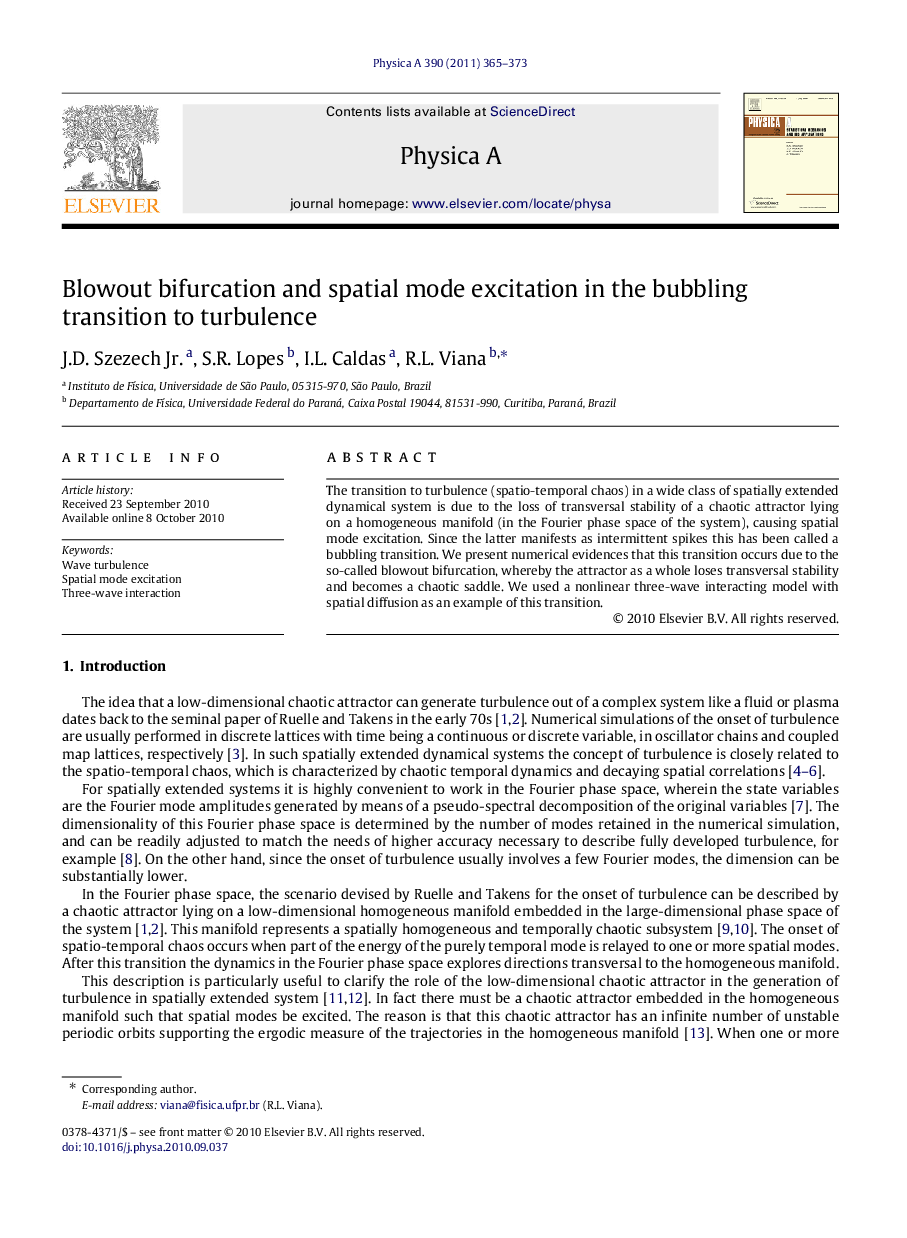| Article ID | Journal | Published Year | Pages | File Type |
|---|---|---|---|---|
| 975969 | Physica A: Statistical Mechanics and its Applications | 2011 | 9 Pages |
Abstract
The transition to turbulence (spatio-temporal chaos) in a wide class of spatially extended dynamical system is due to the loss of transversal stability of a chaotic attractor lying on a homogeneous manifold (in the Fourier phase space of the system), causing spatial mode excitation. Since the latter manifests as intermittent spikes this has been called a bubbling transition. We present numerical evidences that this transition occurs due to the so-called blowout bifurcation, whereby the attractor as a whole loses transversal stability and becomes a chaotic saddle. We used a nonlinear three-wave interacting model with spatial diffusion as an example of this transition.
Related Topics
Physical Sciences and Engineering
Mathematics
Mathematical Physics
Authors
J.D. Szezech Jr., S.R. Lopes, I.L. Caldas, R.L. Viana,
